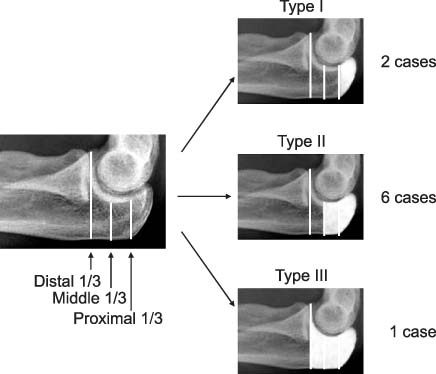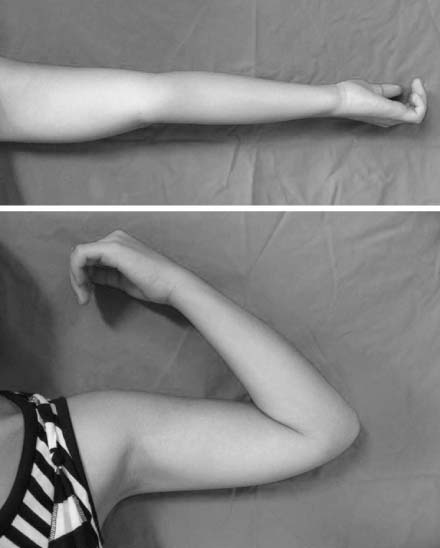Articles
- Page Path
- HOME > J Musculoskelet Trauma > Volume 21(2); 2008 > Article
-
Original Article
- Double Tension Band Wiring for Olecranon Fractures
- Suk Kang, M.D., Chung Soo Hwang, M.D., Phil Hyun Chung, M.D., Young Sung Kim, M.D., Jin Wook Chung, M.D., Jong Pil Kim, M.D.
-
Journal of the Korean Fracture Society 2008;21(2):130-135.
DOI: https://doi.org/10.12671/jkfs.2008.21.2.130
Published online: April 30, 2008
Department of Orthopaedic Surgery, College of Medicine, Dongguk University, Gyeongju, Korea.
- Address reprint requests to: Jong Pil Kim, M.D. Department of Orthopaedic Surgery, Dongguk University, Gyeongju Hospital, College of Medicine, Dongguk University, 1090-1, Seokjang-dong, Gyeongju 780-350, Korea. Tel: 82-54-770-8221, Fax: 82-54-770-8378, kjpil@dongguk.ac.kr
Copyright © 2008 The Korean Fracture Society. All rights reserved.
This is an Open Access article distributed under the terms of the Creative Commons Attribution Non-Commercial License (http://creativecommons.org/licenses/by-nc/3.0/) which permits unrestricted non-commercial use, distribution, and reproduction in any medium, provided the original work is properly cited.
- 433 Views
- 0 Download
- 2 Crossref
Abstract
-
Purpose
- To evaluate the clinical results of double tension band wiring for communited olecranon fractures involving proximal 1/3.
-
Materials and Methods
- We reviewed 9 cases of communited olecranon fractures involving proximal 1/3 treated with double tension band wiring followed for minimum 10 months. There were 2 cases of olecranon fractures involving only proximal 1/3, 6 cases of olecranon fractures involving from proximal 1/3 to middle 1/3 and 1 case of olecranon fractures involving from proximal 1/3 to distal 1/3. We analyzed the bone union time, radiologic results for gap, reduction loss, pin migration, pain, range of motion, complications and functional outcomes at last follow up.
-
Results
- All patients had solid bone union without additional surgery and average union time was 10.3 weeks. Anatomical reduction could be obtained in 8 of 9 cases but there was 1 mm step off in one case. 36 pins were used to fix the fractures, 1 pin of 18 distal pins and 2 pins of 18 proximal pins were migrated to backward but there was no reduction loss. Only 1 distal pin needed early removal due to skin irritation. Average range of motion ranged from flexion contracture 3.3° to further flexion 137.8°. On functional analysis, we got 8 cases of good result, 1 case of fair result and there was no poor result.
-
Conclusion
- Double tension band wiring for comminuted olecranon fracture involving proximal 1/3 was concluded to give a firm fixation of the fracture site as bone union could be acquired without serious pin problems.
- 1. Coonrad RW. The elbow. Master techniques in orthopaedic surgery. In: Morrey BF, editor. Management of olecranon fractures and nonunion. 1st ed. New York: Raven Press Ltd; 1994. p. 71-95.
- 2. Fyte IS, Mossad MM, Holdsworth BJ. Methods of fixation of olecranon fractures. An experimental mechanical study. J Bone Joint Surg Br, 1985;67:367-372.
- 3. Helm RH, Hornby R, Miller SW. The complications of surgical treatment of displaced fracture of the olecranon. Injury, 1987;18:48-50.Article
- 4. Macko D, Szabo RM. Complications of tension-band wiring of olecranon fractures. J Bone Joint Surg Am, 1985;69:1396-1401.Article
- 5. Matter P, Scharplatz D. Fractures and dislocation of the Elbow. Operative orthopedics. 2nd ed. Philadelphia: J.B. Lippincott Co; 1988. p. 253-262.
- 6. Morrey BF. Current concepts in the treatment of fractures of the radial head, the olecranon and the coronoid. Instr Course Lect, 1995;44:175-185.Article
- 7. Muller ME, Allgower M, Schneider R, Willenegger H. Manual of internal fixation. 3rd ed. Berlin: Springer-Verlag; 1991. p. 44-45.
- 8. Park SW, Hur CY, Shim JH. Operative treatment of olecranon fracture. J Korean Soc Fract, 1994;7:58-64.Article
- 9. Shin HD, Rhee KJ, Lee JK, et al. Operative treatment of olecranon fractures using tension band wiring. J Korean Soc Fract, 1998;11:672-682.Article
- 10. Weber BG, Vasey H. Osteosynthesis bin olekranon fraktures. Z Unfallmed Berufskr, 1963;56:90-96.
REFERENCES
Fig. 1
Type I: Olecranon fracture involving only proximal 1/3.
Type II: Olecranon fracture involving from proximal 1/3 to middle 1/3.
Type III: Olecranon fracture involving from proximal 1/3 to distal 1/3.

Classification of olecranon fracture.

Fig. 2
(B) Immediate postoperative radiographs showed anatomical reduction with double tension band wiring.
(C) Radiographs of postoperative 9 months demonstrated the excellent congruence of the elbow joint.

(A) Initial radiographs depicted the intraarticular communited fracture of proximal olecranon (type II).

Figure & Data
REFERENCES
Citations
Citations to this article as recorded by 

- Treatment of Olecranon Fractures with Proximal Ulna Comminution Using Locking Compression Plates
Ki-Do Hong, Tae-Ho Kim, Jae-Cheon Sim, Sung-Sik Ha, Min-Chul Sung, Jong-Hyun Jeon
Journal of the Korean Fracture Society.2015; 28(1): 59. CrossRef - Olecranon Nonunion after Operative Treatment of Fracture
Ho-Jung Kang, Ji-Sup Kim, Myung-Ho Shin, Il-Hyun Koh, Yun-Rak Choi
Journal of the Korean Fracture Society.2015; 28(1): 30. CrossRef
Double Tension Band Wiring for Olecranon Fractures



Fig. 1
Classification of olecranon fracture.
Type I: Olecranon fracture involving only proximal 1/3.
Type II: Olecranon fracture involving from proximal 1/3 to middle 1/3.
Type III: Olecranon fracture involving from proximal 1/3 to distal 1/3.
Fig. 2
(A) Initial radiographs depicted the intraarticular communited fracture of proximal olecranon (type II).
(B) Immediate postoperative radiographs showed anatomical reduction with double tension band wiring.
(C) Radiographs of postoperative 9 months demonstrated the excellent congruence of the elbow joint.
Fig. 3
Elbow joint motion on last follow up ranges from 0° to 150°.
Fig. 1
Fig. 2
Fig. 3
Double Tension Band Wiring for Olecranon Fractures
Criteria for radiologic assessment
Criteria for clinical evaluation
Data of patients
Radiologic and Functional outcomes
Table 1
Criteria for radiologic assessment
Table 2
Criteria for clinical evaluation
Table 3
Data of patients
Table 4
Radiologic and Functional outcomes

 E-submission
E-submission KOTA
KOTA TOTA
TOTA TOTS
TOTS





 Cite
Cite

